
 |
Home | Tibet Buddhism Main | Contact |
Updated: December 2009
The following reference information is included:
My rating scale:
 Excellent ;
Excellent ;
 Very Good ;
Very Good ;
 Good ;
Good ;
 Fair ;
Fair ;
 Poor.
Poor.
Click on an image to see the FULL size with a caption.
As my son grows up, here are books he has enjoyed.
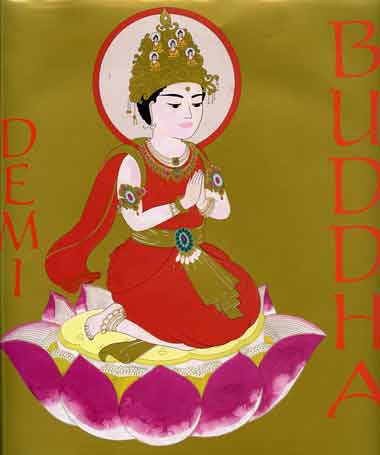
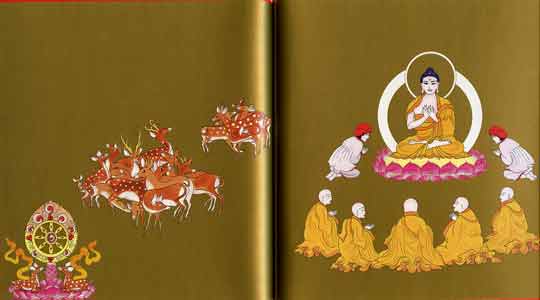

by Demi. In this picture-book, Buddhist Demi describes Buddha's life from the prophecies preceding his birth to his death at age 80. She describes his protected royal youth, his search for a way to end suffering, his enlightenment, and his compassionate teaching of the basic tenets of Buddhist faith, the Four Noble Truths and the Eightfold Path.
The book also includes several parables, such as the well-known "The Blind Men and the Elephant." In vibrant colours and shimmering gold, Demi has painted visually engaging illustrations rich in Buddhist symbolism and artistic conventions.
Demi has written a children's book in simple language that is easy to understand, but also profound at the same time. Her intricately detailed, full-color illustrations are excellent.
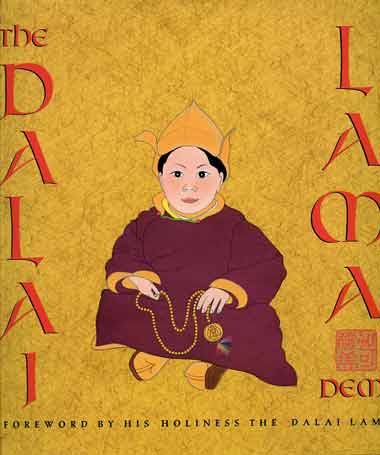


by Demi. After an introduction by the 14th Dalai Lama, Buddhist Demi starts this picture-book with a brief introduction to Tibet and the Buddhism. After the death of the 13th Dalai Lama, she describes finding his successor, who moves to the holy city of Lhasa, where he studies Buddhism and academic subjects. He is a mischievous boy who loves taking things apart and putting them back together. The book concludes with his taking power in Tibet, the Chinese takeover, his escape to India, and his life in exile. The last pages stress his universal message of peace and his compassion for all people. Demi's illustrates the text with soaring landscapes, Himalaya mountaintops, palace pageantry, and people and their traditional dress.
Demi has written a children's book in simple language that is easy to understand, but also provides a lot of information. Her full-colour illustrations are excellent.
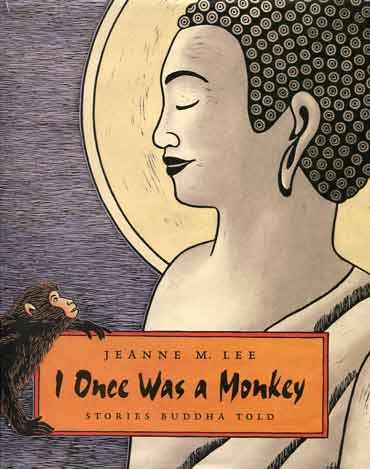
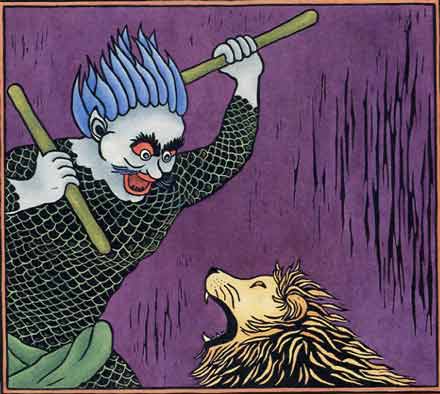

by Jeanne M. Lee. A group of animals sheltering in a cave from the fierce monsoon rains hears a small statue of Buddha speak. "Hush children, hush", Buddha says, "I will tell you a story to pass the time."
In each of six Jataka tales, Buddha assumes a different shape, from a willow tree to a monkey to a golden antelope, to impart his messages like peace, tolerance and respect. Illustrations accompany the stories.
These stories are a great way to discuss with your child topics like honesty, fear, greed, friendship and kindness. The illustrations are well done, and add a visual perspective so important for young children.
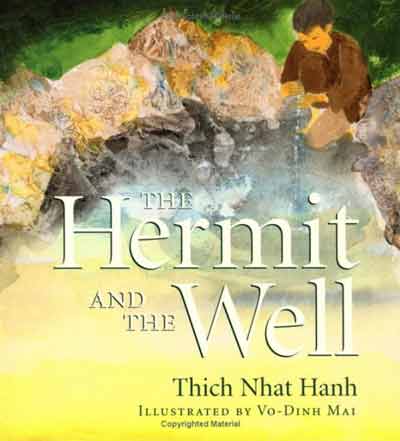


by Thich Nhat Hanh, Vo-Dinh Mai (illustrator). Based on his own life, the Buddhist monk tells this story of a young Vietnamese boy who climbs a mountain in the hope of meeting a famed hermit. When he arrives on the top of the mountain with other members of his class, the hermit's hut is empty. He goes deeper into the forest trying to locate the hermit on his own. Instead he finds a well filled with sweet water and finds the secret of his own happiness. The paintings of artist Vo-Dinh are a perfect complement to Hanh's marvelous tale.
You can almost hear Thich Nhat Hanh's gentle voice telling us his true story of spiritual awakening. The full-page watercolor illustrations provide the visual perspective so important for young children.

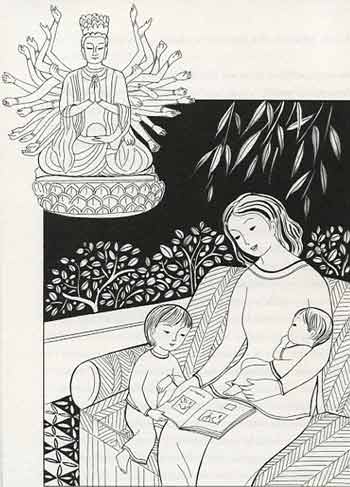

by Thich Nhat Hanh, illustrated by Philippe Ames, Nguyen Thi Hop, and Nguyen Dong. Using colorful stories and illustrations, Thich Nhat Hanh presents the basic teachings of the Buddha in a way that can be easily understood by children. He also shares ideas on walking meditation, stopping and breathing, eating an orange, tree-hugging, touching the earth, and arranging flowers.
Thich Nhat Hanh offers a practice that children can do to help them deal with anger and unhappiness. "Dear Buddha. Here is my pebble. I am going to practice with it when things go wrong in my day. Whenever I am angry or upset, I will take the pebble in my hand and breathe deeply. I will do this until I calm down."
An easy to understand children's book that contains simple practices that children can perform.
As my son grows up, here are books he has enjoyed.
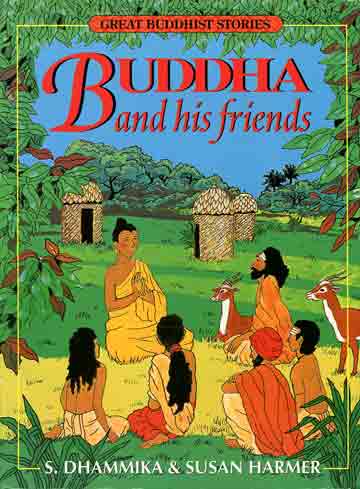


by Shravasti Dhammika, illustrated by Susan Harmer. The first book starts by describing Siddhartha's birth and carefree youth, his years of ascetic suffering, and his enlightenment. The book then continues with stories of the colourful people he encountered in ancient India, like Angulimala - the misguided murderer and collector of fingers; and Asurinda - the grumpy and angry Brahmin.

by Shravasti Dhammika, illustrated by Susan Harmer. The second volume in Great Buddhist Stories continues Buddha's adventures, meeting colourful characters like Anathapindika - the Feeder of the Poor, who became one of the Buddha's greatest benefactors; and Devadatta - the ambitious monk who challenged the Buddha for the leadership of the community of monks. The book ends with Buddha on his final journey to Kusinara as he closes the chapter on a remarkable life.
These Tin Tin-type cartoon books very informative and entertaining.
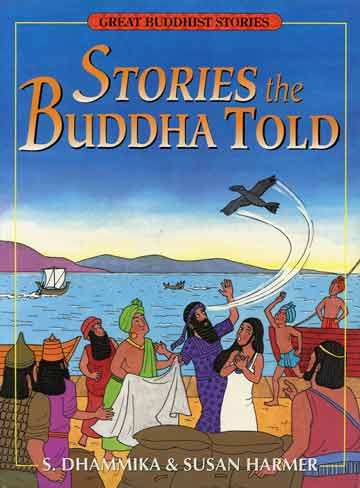
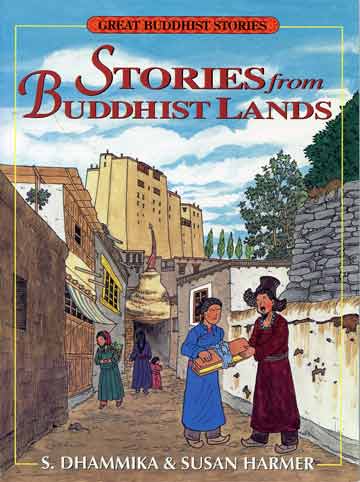

by Shravasti Dhammika, illustrated by Susan Harmer. The third volume in Great Buddhist Stories features amusing and clever stories told by the Buddha to illustrated his teachings. The Buddha used these stories to reveal to values like honesty, kindness, courage, generosity and wisdom.

by Shravasti Dhammika, illustrated by Susan Harmer. The fourth volume in Great Buddhist Stories features stories from India, Sri Lanka, Japan, China and Tibet, imparting important life lessons from the ancient Buddhist traditions. The stories include the rich, ungrateful man who tried to cheat his helpers of their promised reward; the kindly Abbot who helped a young man discover his true worth; the monk who did not fear death; and the proud merchant who finds out that wealth and fame are not the most important things in life.
These Tin Tin-type cartoon books very informative and entertaining.
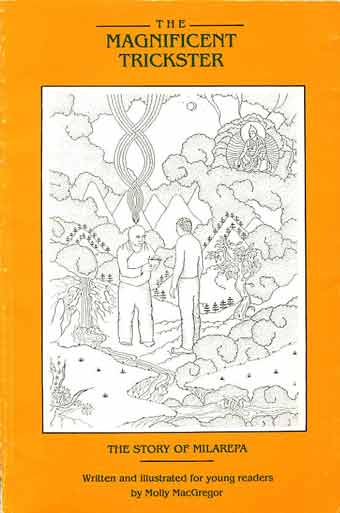
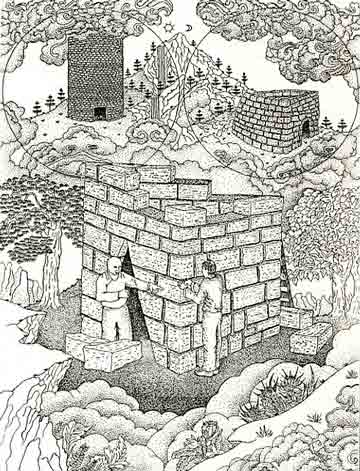

by Molly MacGregor. Milarepa (1052 - 1135) is one of the most famous figures in Tibetan history. When his father died Milarepa's uncle and aunt took all the family's wealth. At his mother's request Milarepa left home and studied sorcery. While his aunt and uncle were having a party, Milarepa took his revenge, killing 35 people.
Realizing that his revenge was wrong, Milarepa set out to find a lama and was led to Marpa the translator. Marpa proved a hard task master, and before he would teach him had Milarepa build and then demolish three towers in turn. After being taught by Marpa, Milarepa meditated in caves and became known as a singer of many songs of devotion and wisdom. Also an accomplished teacher, he attracted students who later went on also to found important lineages.
I loved the humorous story of Milarepa building a tower, only to be told by Marpa to tear it down and start over again. The story is fast-paced and filled with magic and surprises.
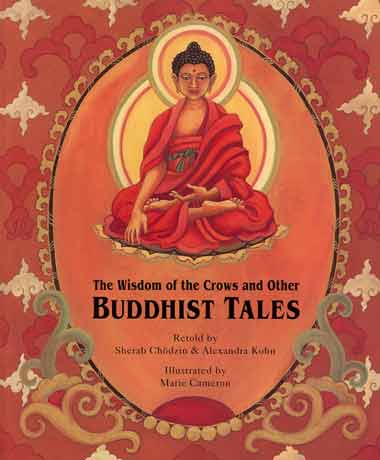
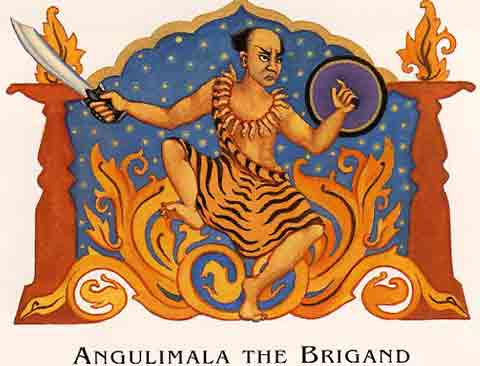

by Sherab Chodzin and Alexandra Kohn, illustrated by Marie Cameron. This book is a collection of 13 Zen folktales from India, Burma, Tibet, China, and Japan, that illustrate Buddhist values. The title story expresses the sentiment that true wisdom sees beyond superficial events. Some of the more popular stories include Angulimala the Brigand (see also The Buddha and the Terrorist), who murdered people, adding their fingers to his gruesome necklace, and Useless Work, the story of two monks carrying a young woman across the water.
Although stated for ages 4-8, I recommend it should be 9-12. The shorter stories are ok for the younger children, but the longer, more complex stories probably should wait until they are older. The illustrations are very good, with characters vividly drawn in traditional dress. I really liked the Zen story of the four young monks who take a temporary vow of silence only to violate it one after the other, with the last one declaring triumphantly "I am the only one who hasn't talked." The illustrations are excellent.
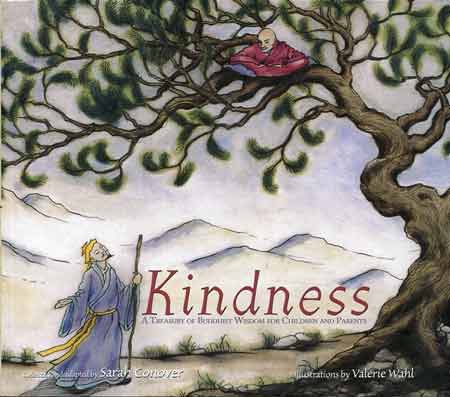
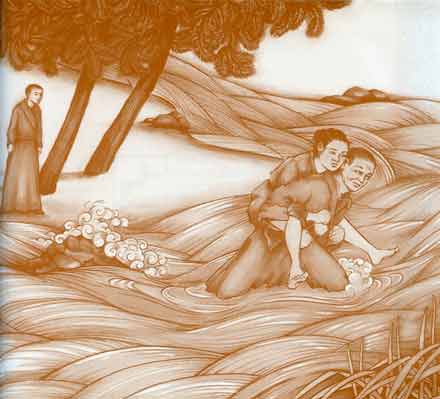

by Sarah Conover, illustrated by Valerie Wahl. This book features 32 less-known Jataka tales from India, Japan, and Tibet, each only a few pages long. Sepia-coloured illustrations capture the key moment of 12 of the tales. Each story is preceded by a wise Buddhist saying, describing the key message or moral for the tale.
One of my favourites is the Buddhist story of the mustard seed, where the Buddha tells a woman who has lost her child to seek out mustard seeds from families that have not been exposed to death. In doing so, the woman learns the universality of grief.
At first, my son enjoyed the simpler tales, but as he grew older he grew to appreciate the more challenging stories. The illustrations are fairly basic.
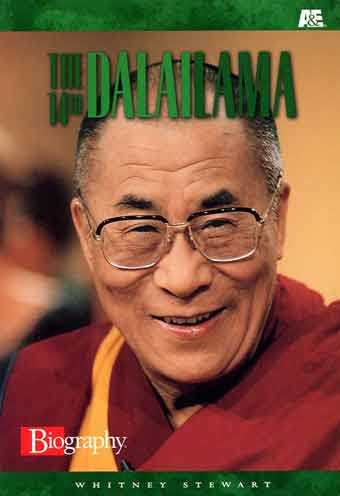
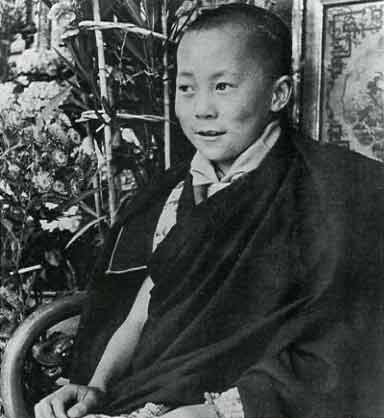
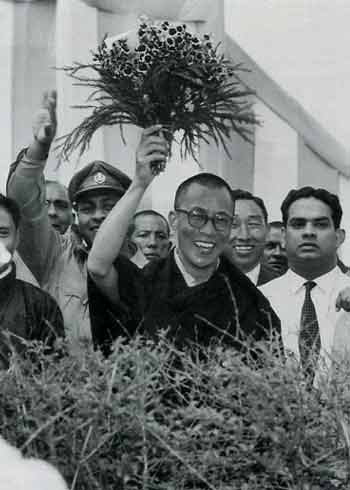

by Whitney Stewart. The author chronologically traces the 14th Dalai Lama's life, starting with his discovery and childhood, detailing both the political history of the country and the spiritual life of the Dalai Lama. In 1950, when the Dalai Lama was only 15 years old, the Chinese Communists invaded Tibet, and in 1959 he was forced to escape into exile in India. She finishes the biography with the Dalai Lama on the world stage. There are 13 colour photos and 38 b/w photos.
This is a good biography of the Dalai Lama for young people. It let's them know what is going on in Tibet. It is easy to read and very interesting. The photos help bring the story to life.
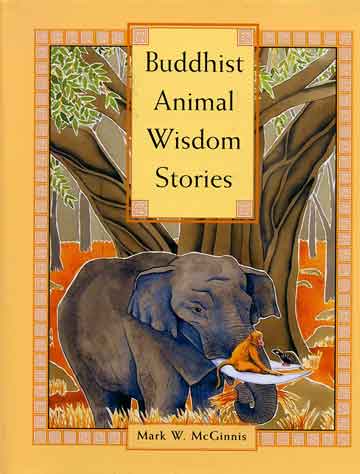


by Mark W. McGinnis. This book features 42 Jataka tales mostly from India, Japan, and Tibet. Each story is only a few pages long and illustrated with a full-page colour drawing. The stories star different animals, highlighting morals from kindness and cooperation to greed and foolishness.
After we finished each story, my son and I discussed what we thought the message or moral of the story is. Some were obvious while others required more discussion. The illustrations are very good.
As my son became a teenager, here are books he has enjoyed.
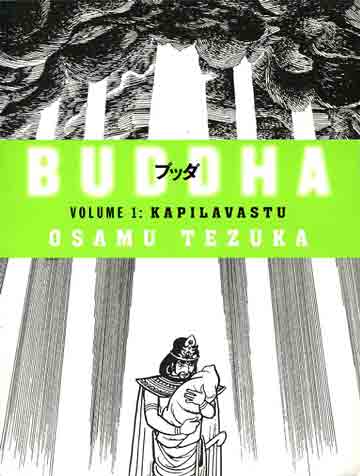

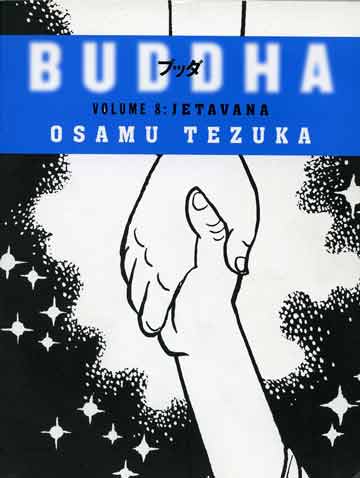

by Osamu Tezuka, the famed Japanese manga comic writer. Originally published in the 1970s, the series of 8 books is an action packed story that blends the tradition of Buddha's life with fictional elements and characters of Tezuka's own making, which brings the story new depth. The main Buddha story remains intact, from Siddhartha's birth, his upbringing in the castle, his ascetic years, his fights with Mara and his enlightenment, his first sermon in Deer Park, his growing list of disciples, and finally his death.
Most of the normal characters from the Buddha story are here (like Suddhodana, Yasodhara, Devadatta, Ananda, Bimbisara, and Angulimala) although Tezuka sometimes takes some liberties. For example, Ananda is Devadatta's brother and falls under Mara's power until Buddha rescues him.
The extra characters (like Tatta who communicates with animals, Tatta's wife Migala, and the giant Yatala) help give the story depth and extra historical perspective.
These books are not for children, as there are adult themes and language, violence, and nudity. I really liked the off-the-wall things that happen like the king of Kosala being a pro wrestler, a talking horse, a prince reading comic books, thumb wrestling, and guest appearances by a yeti, the author himself, and Zorro. I also liked the irreverent illustrations, like when Tatta is seen peeing on the army who attacked his family.
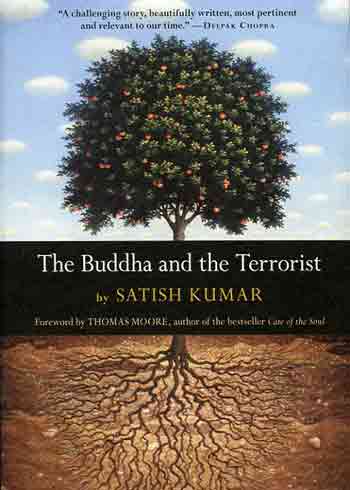

by Satish Kumar. In this famous Buddhist story, the Buddha meets up with Angulimala, named for his horrific practice of killing people and wearing a necklace of their severed fingers. The killer is stunned by the Buddha's willingness to listen to his story. Born into a low and much-despised caste, Angulimala has turned misery into murderous rage. Transformed by the Buddha's teaching that compassion, not vengeance, is the way to battle injustice, Angulimala becomes a monk known as Ahimsaka (the Nonviolent One). Now the king and the victims' loved ones must decide whether to execute the former terrorist for his crimes or recognize that he has repented and become a force for good.
This is the best telling of the famous Buddhist story of Angulimala I have read, literally bringing tears to my eyes. I hope this story will teach teenagers and adults that understanding and compassion are an alternative to the unending cycle of bloodshed and retaliation of terrorism.
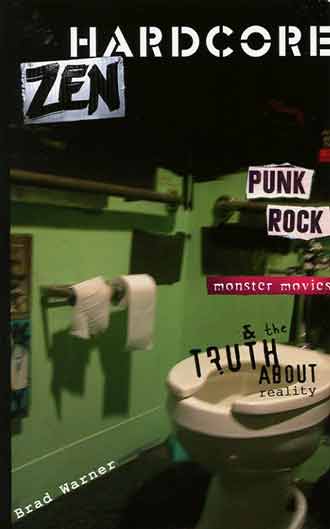
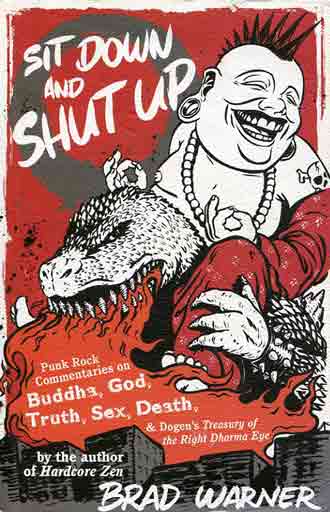

by Brad Warner, an early-80s hardcore punk musician who became a Zen monk. First published 2003. Warner devotes chapters to some common Zen notions such as the oneness of reality, reincarnation, and the importance of the present moment. By liberally sharing anecdotes from his own life as a down-and-out punk rocker and maker of monster movies, Warner constantly focuses on the importance of a direct experience of reality in all its rawness over adherence to any set of beliefs-even Zen ones.

by Brad Warner. Warner ambitiously presents something close to textual commentary on 13C Japanese Zen master Dogen's masterwork Shobogenzo teaching on anger, s*x, loving-kindness, dependent arising and other familiar Buddhist themes.
I thoroughly enjoyed Warner's writing style - direct, funny, profane, challenging and a bit irreverent. I think his books will appeal to a whole generation of younger people who don't want to read the stuffy, esoteric Buddhist books.
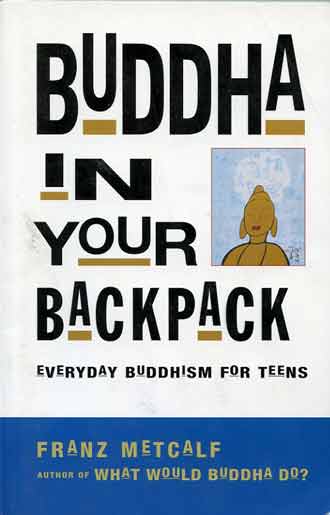

by Franz Metcalf. The book starts with the basics of Buddha's life and the four Noble Truths. He then comments on the difficult issues faced by teenagers like home life, school, the changing body, sex and drugs. It then describes some basic meditation techniques and other Buddhist practices like mindfulness.
I think teenagers will enjoy reading this book because it is not preachy and leaves the decisions up to them. I like the slightly irreverent style and telling some very funny Buddhist jokes, like why can't Buddhists vacuum in corners? Because they don't have any attachments.
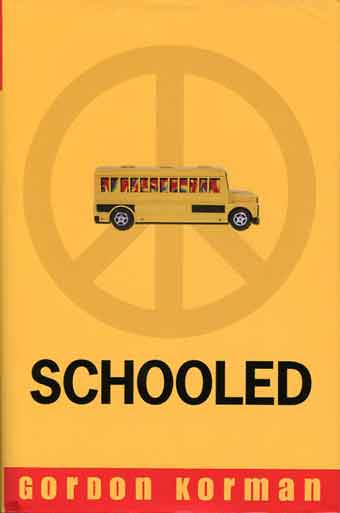

by Gordon Korman. Thirteen year old Cap has been homeschooled, has long hair, has never watched television, and can even drive. When his hippie grandmother Rain is hospitalized, Cap is taken from their farm commune to live with a social worker and sent to middle school. "People dress funny; they talk too fast; and all they’re interested in is things!" Cap becomes the butt of pranks, including his election as school president. "You could harass him; you just couldn’t upset him."
Cap doesn't know anybody, but vows to learn the names of all 1100 students. Cap innocently, but with compassion, treats everyone well, and slowly gains accceptance. A final prank takes things too far, when Cap is hospitalized after being dressed up as the opposition mascot and tackled mercilessly by the football team. The school rallies around Cap.
A truly inspiring book of compassion. I love some of Cap's statements like, "Why can’t everybody just share?", and "Rain says that there should be no limit on giving ... only taking."
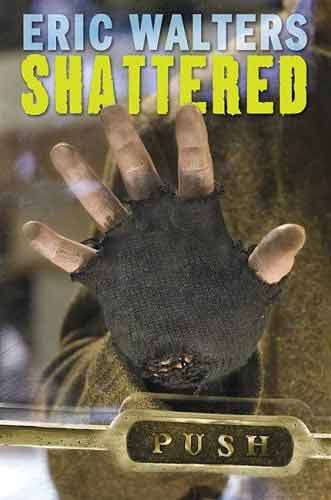

by Eric Walters. To pass social studies, 15-year-old Ian must complete community volunteer service. Choosing to work at "The Club" sounds like fun, until he arrives at what turns out to be a soup kitchen for the homeless in an unsafe part of the city. Ian is saved from a near-mugging by a fierce, pipe-wielding homeless man. The soup kitchen is run by a gruff, plain speaking ex-alcoholic named Mac. When Sarge, the man who saved him, shows up at the soup kitchen looking far less fierce, Ian begins to get to know him.
Under Mac’s tutelage, Ian soon learns about the kitchen’s patrons, including Sarge, and the social discrimination and personal hardships they’ve faced. He’s also told firmly, "You’re not here to judge 'em or save 'em, just serve 'em food." However, the closer Ian gets to Sarge, he learns about Sarge's past and his peacekeeping time in Rwanda. He hears about the horrors of dead bodies stacked like cordwood, the rape and killing he witnessed, and the monumental failure on the part of world powers to stop it.
A truly inspiring book, putting a life to the faces of the homeless poeple the world over, and showing that one person can make a difference in the lives of other people.. Eric Walters has many other interesting books including Sketeches.
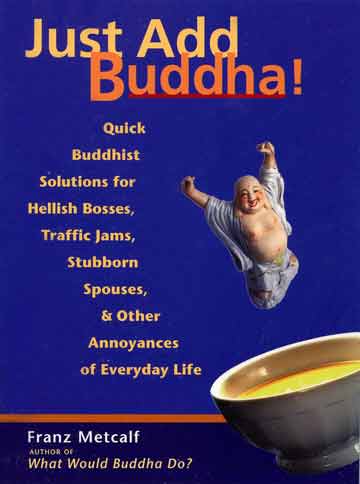



by Franz Metcalf. Following in the spirit of the popular What Would Jesus Do? books, these books takes the ancient wisdom of Buddha and applies it to contemporary questions of personal identity, relationships, and societal issues at home and at work.
For example, the question what would Buddha do when criticized? is answered in the Dhammapada, verse 76: "Look upon one who tells you your faults as giving you a hidden treasure, as a wise person who shows you the dangers of life." How do you deal with that last slice of pizza you really shouldn't have but want all the same.
If you are looking for simple and straightforward advice to common everyday problems and situations, these are very good books. Metcalf's writing style is humorous, personal, and honest. Instead of providing Buddhist teachings and letting us think through how to use them in our daily lives, I like the approach of these book in posing questions and situations and then answering them from the Buddhist perspective. I also think these book are perfect for teenagers.
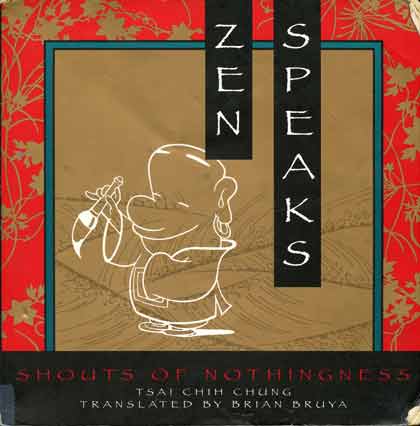
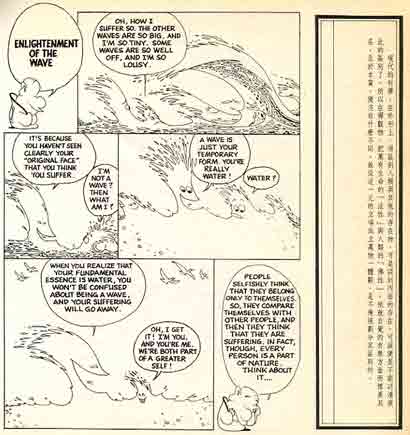

by by Tsai Chih Chung translated by Brian Bruya. A comic book that illustrates in over 110 brief stories the core texts of Zen Buddhism.
I think this is another great beginner book for young teenagers, very funny but profound and wise. My son and I loved reading them.
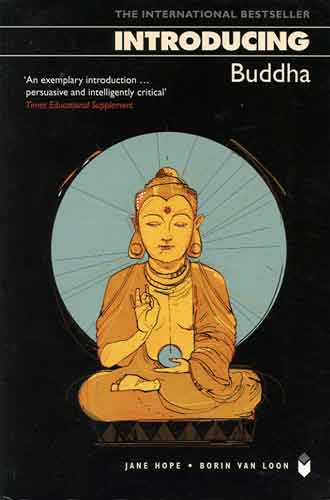
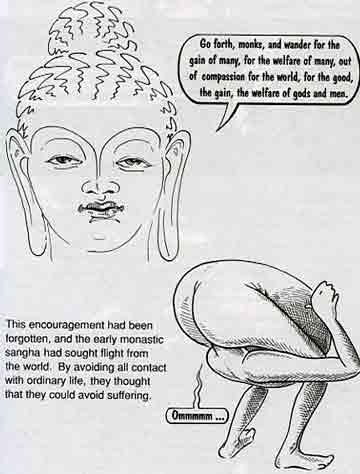

by Jane Hope (Author) and Borin Van Loon (Illustrator). This book describes the life and teachings of the Buddha, and explains the practices of meditation, Taoism and Zen. It goes on to describe the role of Buddhism in modern Asia and its growing influence on Western thought.
I'm not sure this book was meant for children, but my 11-year-old son loved it. This book mixes the teachings of Buddha, and Buddhist traditions, culture, and philosophy with zany and funny cartoons that really bring the message home. It is a delight.
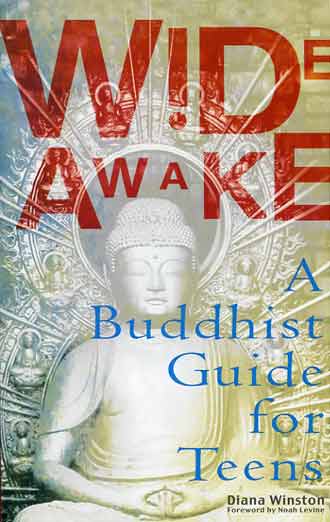

by Diana Winston. First published 2003. The book starts with the basics of Buddha's life, the four Noble Truths, and the eight worldly conditions. She then reviews meditation and surfacing our goodness. She then moves directly into the teenager area discussing karma, precepts, sex, wise speech, intoxicants, and moving out into the world and getting a job and participating in engaged Buddhism.
Although written for teenagers, it has very much an adult feel to it. Unlike Brad Warner or Fritz Metcalf, it is not written in the language of teenagers. It is not preachy to the reader, leaving the decisions up to them. Winston includes some good practical life examples and testimonials.
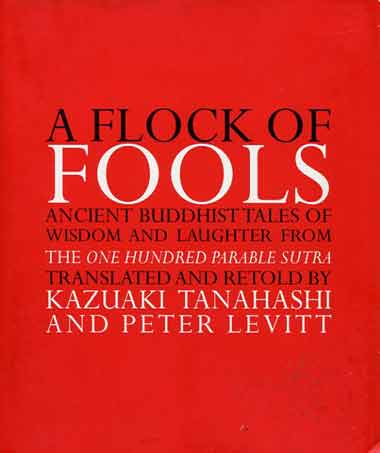

by Peter Levitt, translated by Kazuaki Tanahashi. The One Hundred Parable Sutra is known as the most humourous sutra in all of Buddhist literature, with illuminating tales of the follies of everyday fools. After each story there is an explanation of what the story means in terms of Buddhist teaching.
My son and I enjoyed reading these short, funny stories, one each night. The meaning of the stories weren't always very clear, and sometimes the explanations were a little strange. We especially enjoyed the stories of the woman who sacrificed her only child to the gods to get more children, the man who plucked his eyes out so he wouldn't have to work, and the bald man who searched for a doctor who could grow his hair.